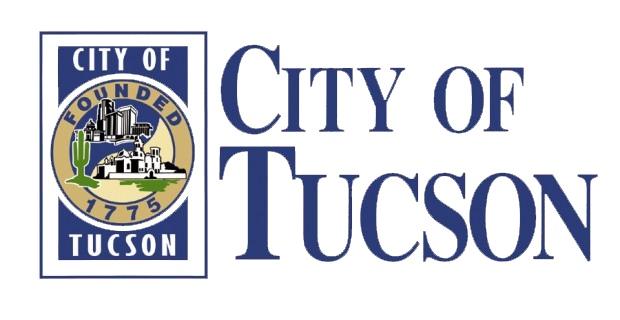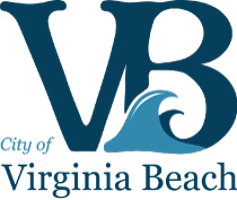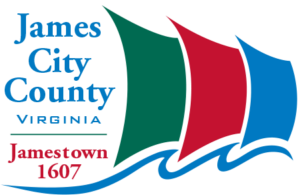Services Provided
- EnergyCAP Enterprise
- Accounting Interface
- Cost Avoidance (M&V)
- Interval Data
- Chargebacks
- Energy Benchmarking
- Greenhouse Gas Tracking
Tucson Uses Energy and Sustainability Data Management for Efficiency
You have to measure what you want to manage, according to the energy manager for the City of Tucson, Arizona. The City wanted to set energy performance goals for its 5,400+ employees, but it didn’t make sense to set those goals without a comprehensive energy tracking tool in place. Prior to 2013, that tool was not in the toolbox. Today with EnergyCAP UtilityManagement™, Tucson has its tool, and the city’s new energy manager is building the City’s energy program and metrics around it.
Energy Efficiency Achieved with Energy Services Management
Prior to EnergyCAP UtilityManagement implementation, historical utility data was stored in an access database which was populated at Accounts Payable. A/P had neither the time nor the subject matter experience to audit the utility bills from an energy management perspective. Since all of the City’s natural gas bills were hand-keyed into the database, the manual process provided significant potential for human error in the system. The database was tracking a very limited data set: total consumption, utility rate, and dollars charged. Available data represented a relatively small portion of the City’s overall utility spend. There was no easy way to obtain more granular information. The situation presented a unique challenge—how do you measure what you want to manage?
One immediate challenge was the software acquisition process itself. Since the City was acquiring energy management software for the first time, it was necessary to build a knowledge base just to define the City’s immediate needs. And the energy management program was in transition, with Jason Laros stepping into the post of City Energy Manager just one month after the software implementation had begun.
Laros had to hit the ground running to manage multiple responsibilities, including reducing energy utility expenditures, promoting the responsible purchase of energy from the most affordable and renewable sources, and maintaining and operating a small solar utility that provides power to 15 City facilities. The energy manager is also responsible to help set energy policy and targets for Citywide and Department-level stakeholders. Other duties include managing the City’s electric vehicle charging station contracts, natural gas purchasing contracts, and energy performance contracts. Handling these diverse responsibilities quickly gave him a wide perspective on Tucson’s energy issues and needs, as well as a healthy appreciation for the power and potential of energy management software.
“Previously, our organization had very poor transparency of our utility expenditures at the departmental and building levels.” said Laros. “They were paid centrally and budgeted in silos. We wanted an energy management system to assist in streamlining an audit process, as well as help us do proactive energy management. We’re very excited about the prospect of using the [EnergyCAP] program to reduce administrative work load by using the customer chargeback module. We have to do a lot of bill splits and chargebacks manually in the City, and this, once fully implemented, will save us a considerable amount of person-hours.”
Setting the Scope
Another implementation challenge was simply setting the scope of the implementation project. A “meter” in EnergyCAP is any point of service for a utility, whether or not a physical meter is present. Since water and solar were vital resources to manage in sunny, dry Tucson, the project scope had to be adjusted to ensure that these key resources could be adequately tracked. A chargebacks module was also added to accommodate necessary accounting processes.
“EnergyCAP staff were generous with their time and gave the City the flexibility to work many of the implementation aspects that EnergyCAP staff normally would perform, in order for us to save dollars in implementation,” said Laros. “This made the augmentations we required affordable for the City.” Only one IT professional could be spared by the City for the software implementation project, so a significant portion of the behind-the-scenes implementation tasks fell to her.
One final challenge in scope-setting: some participants did not immediately recognize the potential of the system and so were not fully engaged in the setup process. It was not until later when they saw the functionality of the system with populated data that they realized the full potential and became more vested in the setup process; however, this resulted in requested changes requiring additional time and re-work. In the end, the system was improved through increased stakeholder involvement as processes were more tailored to meeting all stakeholder needs.
Managing Data
The number and complexity of Tucson’s energy and resource tracking processes posed a significant energy management problem in the absence of a comprehensive tracking tool. These processes also posed significant challenges for EnergyCAP UtilityManagement implementation.
The City’s primary electric bills from Tucson Electric Power (TEP) were available electronically, but only through print-format files. They needed to be run through a reformatter to extract the useful billing information. It also took a long time to get tweaks done to electric bills from TRICO (another vendor). There were so many electric accounts and various situations within the primary electric provider (TEP) that it took much time and effort to develop their reformatter. Additional changes were and are still required to deal comprehensively with solar accounts.
Energy data from the City’s natural gas vendor, Southwest Gas, will soon be processed electronically in a manner similar to TEP. But in the interim, EnergyCAP has assisted Tucson in cobbling together an EDI import process.
Tucson Water is a City-owned utility, but the cost and use data for City-owned water accounts had to be retrieved from an internal billing system called Navaline. For tracking purposes, Tucson will take the data that is already produced by the internal system and create an upload template to put the data into EnergyCAP UtilityManagement.
Utility bills for 21 “Transport Gas” accounts (transportation-only costs for gas purchased from another supplier) are uploaded monthly into EnergyCAP UtilityManagement using a spreadsheet.
Tucson has some very elaborate processes for importing bills with specialized tracking and splitting for reporting purposes. Bills are imported via spreadsheet and manually, and then special audit triggers help to put all the pieces into the “meter” locations required by the City’s internal customers.
Understanding Needs
An additional challenge for the City was determining the extent of their own needs.
"We spent time meeting with every stakeholder department and looking through every utility account that we had documented. Most departments … did not have transparency about their utility consumption. The bills would just go to central Accounts Payable (AP) and get paid, then the amount paid would be withdrawn from the linked department’s account balance. There was nobody doing a review of the utility bills. There was nobody really watching. So we sat down with each stakeholder and helped them look through every account that we felt they owned, and that yielded many conversations and opened many eyes."
Jason Laros // City Energy Manager
The internal audit yielded surprising results. The Fire Department had been paying bills for energy consumed by the Parks department. The City was still paying a lighting bill for a property that had been leased several years ago. Although the main electric meter had been transferred into the lessee’s name, the parking lot lights had not. At the departmental level, there was a general lack of awareness about the number of meters for which the department was responsible, and which meters were linked with which assets. This knowledge gap made it impossible to target energy savings efforts.
At the departmental level, there was a general lack of awareness about the number of meters for which the department was responsible, and which meters were linked with which assets. This knowledge gap made it impossible to target energy savings efforts.
Even with the support of EnergyCAP staff, implementation has been a challenging process. The Department of Transportation has over 1,000 electric meters just for street lights and traffic signals they operate, and matching the meters and accounts was nearly impossible with existing records. The City is currently completing a streetlight retrofit that should provide meter numbers, giving Laros and his team knowledge to organize every streetlight circuit.
Ultimately, Tucson staff learned a valuable lesson: Boots on the ground are a vital part of energy management software implementation, in order to verify meter information and assure that those meters have been linked to the relevant accounts.
The Solution
Laros said that there were three main factors that led to the selection of EnergyCAP UtilityManagement as the City’s tool for utility bill management:
- The EnergyCAP ERP was highly recommended, and a solution that all parties believed could supply the City with all needed services.
- Other government entities in the region already used EnergyCAP UtilityManagement, and there was a perceived value to having similar tracking systems.
- Pima County and the City of Tucson had a cooperative purchasing agreement, which allowed the City to use the County’s competitively-sourced contract with EnergyCAP, avoiding a potentially lengthy and redundant solicitation process.
Implementation of the new system has been thoughtful and thorough, and at the time of this writing, it will be several more months before the program is fully live and implemented. However, the benefits are already becoming apparent.
Accounting
Tucson has already implemented a bill audit process, including reformatters to import and export the bills between EnergyCAP UtilityManagement and the City’s accounting system. EnergyCAP UtilityManagement’s reporting capabilities are now available to help inform building occupants of their consumption levels. Baselining and target setting are important features too. Since EnergyCAP UtilityManagement is now managing payment of almost all of the utility bills, it has become the primary utility accounting tool across the City.
Energy Awareness
To date, the system has elevated awareness of the deficiencies of the City’s legacy utility management practices. According to Laros, “We found an incredible number of processes that were heavily embedded in our day-to-day, but nobody knew why. We found that we, at times, had no idea why departments were paying certain bills. We realized that we didn’t have an accurate count of our utility accounts, nor did the utility companies. Essentially, implementation of the [EnergyCAP] program required us to do an internal audit of all of our utility processes, accounts, assumptions, etc. This was a major benefit of implementing the system.”
Process Efficiency
Since EnergyCAP UtilityManagement implementation, the City is realizing utility bill process efficiencies, and implementing audits that had never before been completed. Laros explains this huge benefit:
"Sometimes a process gets handed from person to person and eventually everybody forgets why the process exists. We found accounts that were paid by the wrong department. We found some accounts were paid directly by a department when nearly everything else went through Accounts Payable. In trying to implement EnergyCAP UtilityManagement, we had to parse through each of the processes and understand their end goal. Specifically, we were able to find ways that we could remove middle-men from the accounting process. The system has given the City a tool to better manage utility expenditures and related budgets at both an aggregate level and a facility level. By setting goals related to energy consumption, Tucson can use EnergyCAP UtilityManagement to monitor consumption. Having data at the facility and department level provides the visibility needed to actively manage to achieve those goals."
Jason Laros // City Energy Manager
One area where the City was able to make significant process improvements was in the area of bill splits and internal chargebacks. The process for internal billing prior to implementation was that vendor bills would be forwarded to Accounts Payable for full payment. Then “host” departments would calculate splits and charge other City departments their share of the bill. This required manual labor and data entry, which added up to time and money, as well as introducing the potential for errors.
Now, bills will be imported into EnergyCAP UtilityManagement, which will perform the bill splits according to formulas set up during the implementation. When the approved bills are exported for payment, the amounts each department owes comes directly out of their accounts. Tucson should realize time savings of 20 hours each month in Accounts Payable. Setting up the new bill splits process also revealed bills that were being routed to the wrong internal customers.
The growing transparency and reliability of energy data has enabled Laros to respond more quickly to emerging energy issues. “We were able to identify specific situations where there are discrepancies in current consumption that were not consistent with historical trending,” said Laros. “Being able to identify these anomalies allowed us to dig deeper to identify issues that could be corrected through controls, tenant behaviors or other means. We were able to quickly respond and avoid costs into the future, as well as undue wear and tear on equipment operating beyond its normal duty cycle.”
Stakeholder Involvement
As the software implementation has proceeded, Laros and his staff have been able to show internal “customers” how to log into the software themselves in order to track their own bills and make progress toward achieving energy management goals.
These preliminary successes have strengthened the argument for consolidation and central management of General Fund utility accounts which Laros believes will place the City in a stronger position when implementing energy performance contracts. “Best of all,” said Laros, “We have engaged a much broader cross section of the City staff in becoming well-informed stewards of the energy and water resources they are consuming. This is a huge benefit.”
Sizing Up Solar
A unique challenge for Tucson’s energy management software implementation was to find creative ways to automate as many complex processes as possible in order to improve efficiency without sacrificing accuracy in determining building energy use.
Solar is a perfect example, since Tucson’s solar program is much more developed than most municipalities.
The City had a process in place to internally pay for their solar utilities, which included 15 sites equipped with bond-purchased solar installations. Tucson collects the money for that debt service, in part, from solar rebates and federal incentives. The rest of the money is raised by charging City departments for the solar power they consume. The internal billing rates are the same as the departments would have paid the local utility for the power if there was no solar. But the affected departments do get two bills instead of one. One bill is from the local utility, and the other from the General Services Department.
To manage the solar information in EnergyCAP UtilityManagement, it was necessary to manually enter the monthly solar production for each of the solar sites, and then create a bill for the customers. The added challenge was to 7 ensure that the total building consumption reporting is accurate, since the utility bill from TEP (the electric provider in these cases) only includes the amount of power the vendor provided, as well as the amount of solar that the City was able to return to the grid. What was unaccounted for was the amount of power produced by the solar and consumed in the building—that data comes from a third-party set of utility grade meters.
For complete energy accounting, all data streams must be integrated to produce a virtual utility bill that would add the net amount consumed from the utility plus the total amount of solar produced and subtract the amount of solar pushed back onto the grid. It has proven to be a challenge to define a clear-cut procedure for handling every solar scenario with the current metering infrastructure.
Elevating Energy Management
One exciting byproduct of the EnergyCAP acquisition has been the elevation of the energy management program, and its increased visibility, in the city administration.
When Laros assumed the energy manager position at the very beginning of a major energy software implementation effort, the City’s Energy Office was employing interns to help crunch the numbers on the top 20–30 buildings in spreadsheets. The process was very time consuming, and there was no other way to measure what Laros wanted to manage.
With the EnergyCAP UtilityManagement implementation, everything has changed. Laros explains:
"Since my arrival at the City, I’ve been trying to build a program that elevates energy management policies and distributes energy management responsibility. As EnergyCAP UtilityManagement has come online, it has presented a real opportunity. With it, I am confident enough to say that if we set some utility performance goals, I will be able to track our progress from the baseline year towards those goals and provide guidance along the way. Before now, that would have been very difficult to say. So now the City has some goals. Really there are only a growing handful of American city governments that have goals, so I view this as a major first step."
Jason Laros // City Energy Manager
Through the goal-setting process, Laros was able to network across the City. In the process, he came to realize that energy managers in large organizations are usually located in positions that make it difficult to succeed. Said Laros, “Energy managers are often located at same level of an organization as a facilities supervisor or superintendent. That seems like a logical choice, but often it is inadequate. While the facilities team has to keep buildings operating, safe and healthy, they are not primarily concerned with changing behavior, policies, processes or even trying new technologies, necessarily. The energy manager often finds him/herself in a struggle to get anything changed. The energy manager’s job is also to help steer the culture of an organization. That is perhaps the most daunting aspect.”
Tucson city administrators have facilitated energy management initiatives by moving the Energy Office out of one of the Facilities divisions (Architecture and Engineering) into the Director’s office. This move enabled the Energy Office to operate on more of a level footing with other administrators overseeing facilities maintenance and projects. It also reflects growing awareness of the energy management program as more as an overhead cost which benefits the whole City as an organization.
Corrective actions taken after identifying two buildings that were operating outside of expected parameters is helping to avoid costs of $8,000 each month. During a transition of building management, building HVAC schedules had been changed or lost, leading to increased run time. Fixing the scheduling remediated the energy consumption spike. Laros is convinced that the EnergyCAP UtilityManagement solution was key to identifying those energy issues more quickly than they would have been.
Tucson Realizes the Potential in Using an Energy Data Management System
The City of Tucson illustrates the kinds of energy management issues and opportunities available as a result of implementing a utility bill management software solution. Laros is anticipating that there will be considerable avoided costs for the City of Tucson that are directly associated with increased energy awareness, data transparency, accounting efficiency and improved energy analysis provided by EnergyCAP UtilityManagement. The implementation experience, though not without its issues, has been valuable. Data reliability and granularity has been enhanced. Foundational utility billing processes have been improved, and the energy management department has been elevated in the City’s political hierarchy. This increased visibility has aided in goal-setting and overall promotion of energy management efforts.
Says Laros, “We are already using EnergyCAP UtilityManagement to audit incoming bills. We will use it to track avoided costs due to our actions and not just beneficial weather patterns. We want to use EnergyCAP to push out reports to elevate awareness of City Department Directors and top decision makers regarding their energy consumption and progress towards goals. EnergyCAP UtilityManagement will be the ‘quarterback’ of our energy management program.”
Acknowledgement
We wish to thank Jason Laros, City Energy Manager, for his assistance in the completion of this Case Study.

 Best-in-class portfolio-level energy and utility bill data management and reporting.
Best-in-class portfolio-level energy and utility bill data management and reporting.
 Real-time energy and sustainability analytics for high-performance, net-zero buildings.
Real-time energy and sustainability analytics for high-performance, net-zero buildings.
 A holistic view of financial-grade scope 1, 2, and 3 carbon emissions data across your entire business.
A holistic view of financial-grade scope 1, 2, and 3 carbon emissions data across your entire business.
 Energy and sustainability benchmarking compliance software designed for utilities.
Energy and sustainability benchmarking compliance software designed for utilities.




